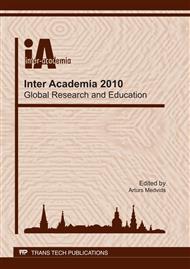p.181
p.185
p.189
p.193
p.197
p.201
p.205
p.209
p.213
Influence of Impurity Band on Seebeck Coefficient in Heavily-Doped Si
Abstract:
We calculated the Seebeck coefficient of heavily-doped Si based on theoretical models of impurity-band formation, ionization-energy shift and conduction-band tailing. The impurity band was described by using two kinds of band-width definitions and it was found that the calculated Seebeck coefficient strongly depended on the impurity-band definition. In the high impurity-concentration region, the Seebeck coefficient decreased with increasing impurity concentration, and with a peak around 1×1019 cm-3. This result was qualitatively in good agreement with the experimental result, while there was quantitative disagreement between them.
Info:
Periodical:
Pages:
197-200
Citation:
Online since:
April 2011
Authors:
Price:
Сopyright:
© 2011 Trans Tech Publications Ltd. All Rights Reserved
Share:
Citation:


